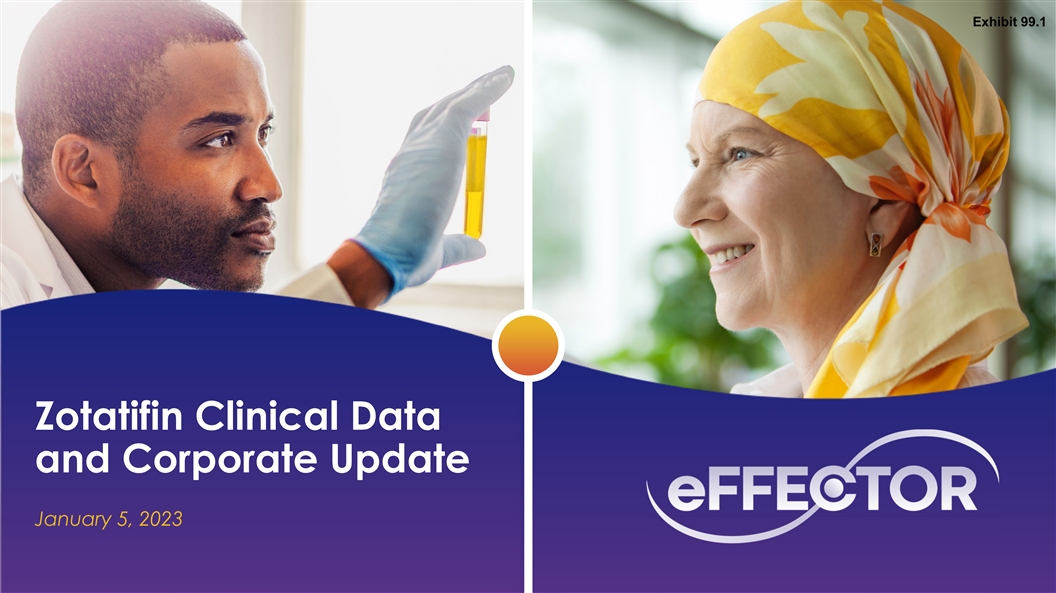
Exhibit 99.1 Zotatifin Clinical Data and Corporate Update January 5, 2023
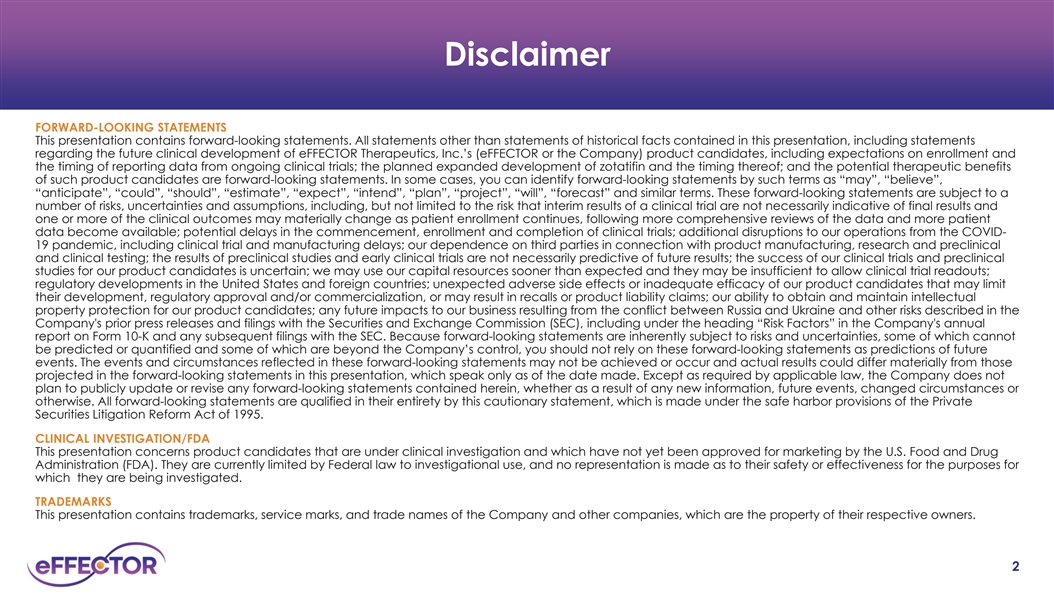
Disclaimer FORWARD-LOOKING STATEMENTS This presentation contains forward-looking statements. All statements other than statements of historical facts contained in this presentation, including statements regarding the future clinical development of eFFECTOR Therapeutics, Inc.’s (eFFECTOR or the Company) product candidates, including expectations on enrollment and the timing of reporting data from ongoing clinical trials; the planned expanded development of zotatifin and the timing thereof; and the potential therapeutic benefits of such product candidates are forward-looking statements. In some cases, you can identify forward-looking statements by such terms as “may”, “believe”, “anticipate”, “could”, “should”, “estimate”, “expect”, “intend”, “plan”, “project”, “will”, “forecast” and similar terms. These forward-looking statements are subject to a number of risks, uncertainties and assumptions, including, but not limited to the risk that interim results of a clinical trial are not necessarily indicative of final results and one or more of the clinical outcomes may materially change as patient enrollment continues, following more comprehensive reviews of the data and more patient data become available; potential delays in the commencement, enrollment and completion of clinical trials; additional disruptions to our operations from the COVID- 19 pandemic, including clinical trial and manufacturing delays; our dependence on third parties in connection with product manufacturing, research and preclinical and clinical testing; the results of preclinical studies and early clinical trials are not necessarily predictive of future results; the success of our clinical trials and preclinical studies for our product candidates is uncertain; we may use our capital resources sooner than expected and they may be insufficient to allow clinical trial readouts; regulatory developments in the United States and foreign countries; unexpected adverse side effects or inadequate efficacy of our product candidates that may limit their development, regulatory approval and/or commercialization, or may result in recalls or product liability claims; our ability to obtain and maintain intellectual property protection for our product candidates; any future impacts to our business resulting from the conflict between Russia and Ukraine and other risks described in the Company's prior press releases and filings with the Securities and Exchange Commission (SEC), including under the heading “Risk Factors” in the Company's annual report on Form 10-K and any subsequent filings with the SEC. Because forward-looking statements are inherently subject to risks and uncertainties, some of which cannot be predicted or quantified and some of which are beyond the Company’s control, you should not rely on these forward-looking statements as predictions of future events. The events and circumstances reflected in these forward-looking statements may not be achieved or occur and actual results could differ materially from those projected in the forward-looking statements in this presentation, which speak only as of the date made. Except as required by applicable law, the Company does not plan to publicly update or revise any forward-looking statements contained herein, whether as a result of any new information, future events, changed circumstances or otherwise. All forward-looking statements are qualified in their entirety by this cautionary statement, which is made under the safe harbor provisions of the Private Securities Litigation Reform Act of 1995. CLINICAL INVESTIGATION/FDA This presentation concerns product candidates that are under clinical investigation and which have not yet been approved for marketing by the U.S. Food and Drug Administration (FDA). They are currently limited by Federal law to investigational use, and no representation is made as to their safety or effectiveness for the purposes for which they are being investigated. TRADEMARKS This presentation contains trademarks, service marks, and trade names of the Company and other companies, which are the property of their respective owners. 2
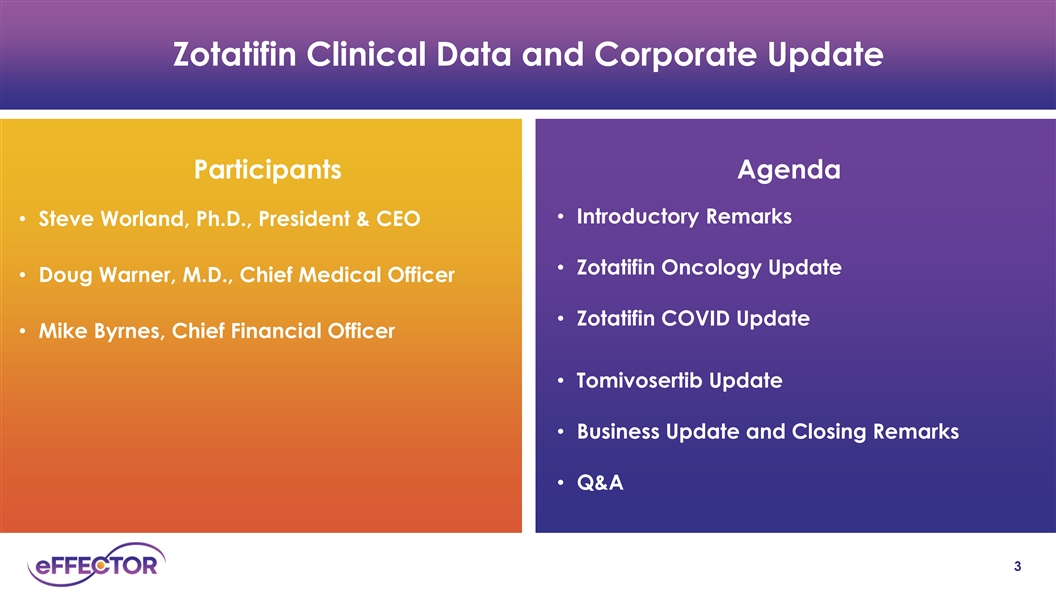
Zotatifin Clinical Data and Corporate Update Participants Agenda • Introductory Remarks • Steve Worland, Ph.D., President & CEO • Zotatifin Oncology Update • Doug Warner, M.D., Chief Medical Officer • Zotatifin COVID Update • Mike Byrnes, Chief Financial Officer • Tomivosertib Update • Business Update and Closing Remarks • Q&A 3
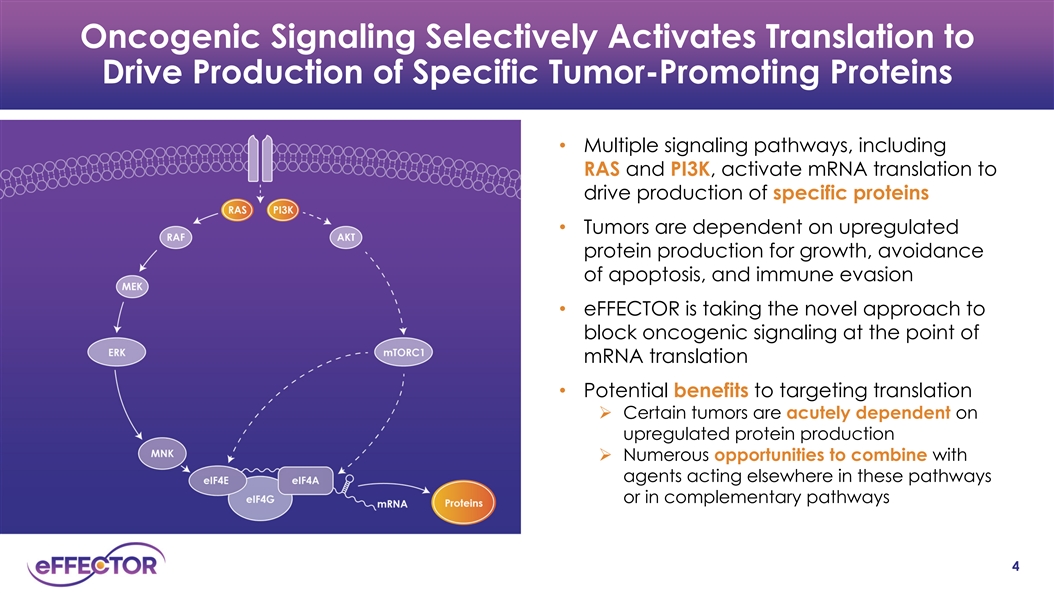
Oncogenic Signaling Selectively Activates Translation to Drive Production of Specific Tumor-Promoting Proteins • Multiple signaling pathways, including RAS and PI3K, activate mRNA translation to drive production of specific proteins • Tumors are dependent on upregulated protein production for growth, avoidance of apoptosis, and immune evasion • eFFECTOR is taking the novel approach to block oncogenic signaling at the point of mRNA translation • Potential benefits to targeting translation Ø Certain tumors are acutely dependent on upregulated protein production Ø Numerous opportunities to combine with agents acting elsewhere in these pathways or in complementary pathways 4
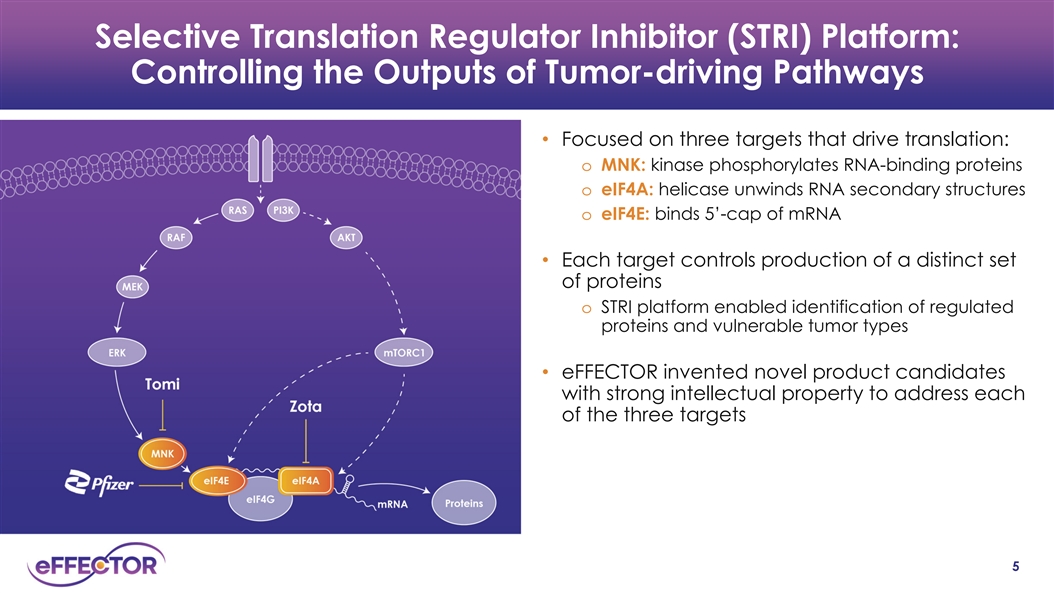
Selective Translation Regulator Inhibitor (STRI) Platform: Controlling the Outputs of Tumor-driving Pathways • Focused on three targets that drive translation: o MNK: kinase phosphorylates RNA-binding proteins o eIF4A: helicase unwinds RNA secondary structures o eIF4E: binds 5’-cap of mRNA • Each target controls production of a distinct set of proteins o STRI platform enabled identification of regulated proteins and vulnerable tumor types • eFFECTOR invented novel product candidates with strong intellectual property to address each of the three targets 5
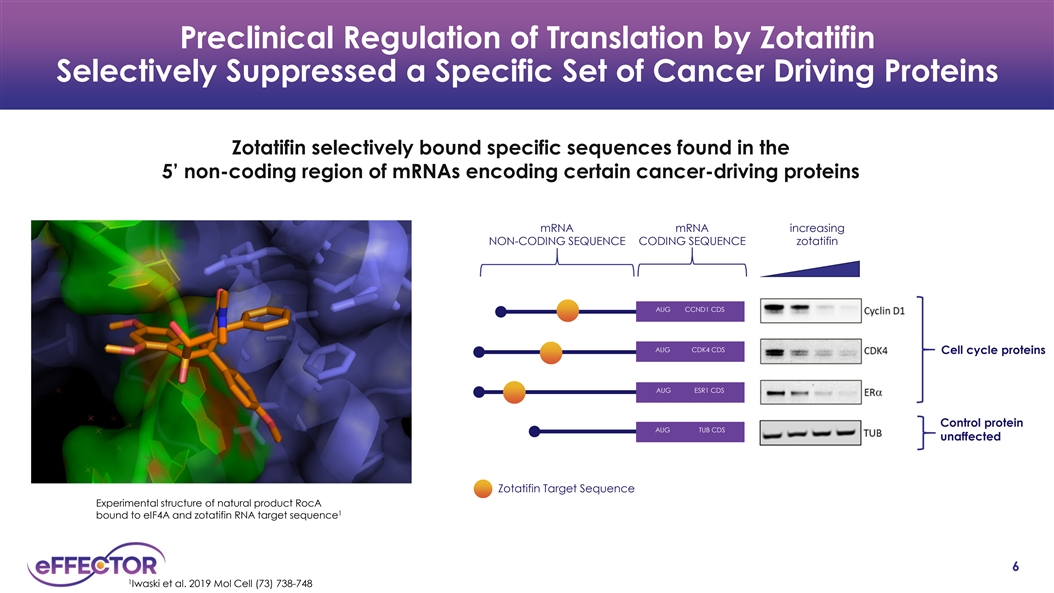
Preclinical Regulation of Translation by Zotatifin Selectively Suppressed a Specific Set of Cancer Driving Proteins Zotatifin selectively bound specific sequences found in the 5’ non-coding region of mRNAs encoding certain cancer-driving proteins mRNA mRNA increasing NON-CODING SEQUENCE CODING SEQUENCE zotatifin AUG CCND1 CDS AUG CDK4 CDS Cell cycle proteins AUG ESR1 CDS Control protein AUG TUB CDS unaffected Zotatifin Target Sequence Experimental structure of natural product RocA 1 bound to eIF4A and zotatifin RNA target sequence 6 1 Iwaski et al. 2019 Mol Cell (73) 738-748
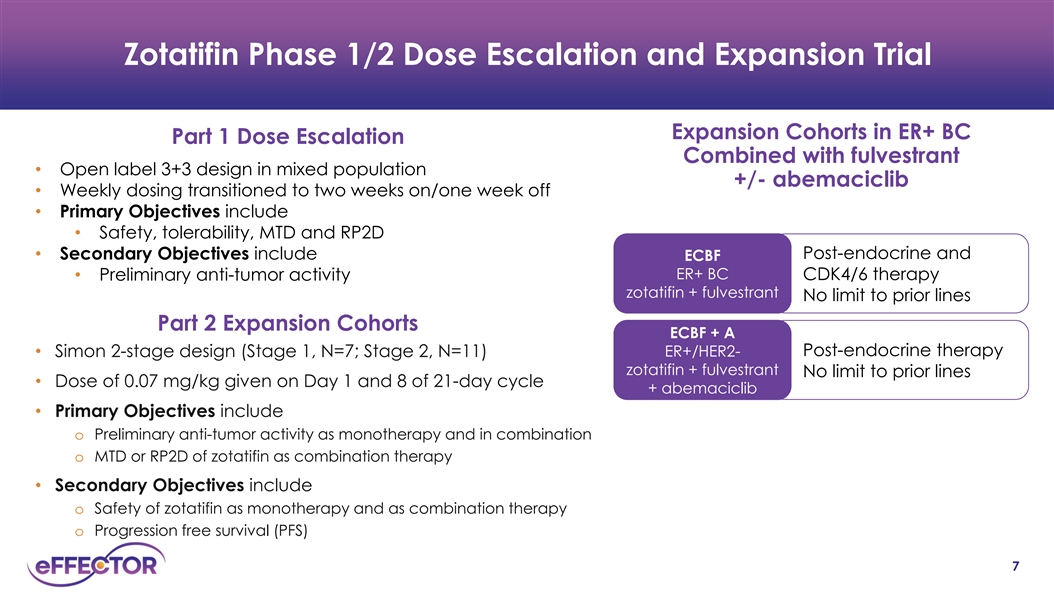
Zotatifin Phase 1/2 Dose Escalation and Expansion Trial Expansion Cohorts in ER+ BC Part 1 Dose Escalation Combined with fulvestrant • Open label 3+3 design in mixed population +/- abemaciclib • Weekly dosing transitioned to two weeks on/one week off • Primary Objectives include • Safety, tolerability, MTD and RP2D • Secondary Objectives include Post-endocrine and ECBF ER+ BC • Preliminary anti-tumor activity CDK4/6 therapy zotatifin + fulvestrant No limit to prior lines Part 2 Expansion Cohorts ECBF + A ER+/HER2- Post-endocrine therapy • Simon 2-stage design (Stage 1, N=7; Stage 2, N=11) zotatifin + fulvestrant No limit to prior lines • Dose of 0.07 mg/kg given on Day 1 and 8 of 21-day cycle + abemaciclib • Primary Objectives include o Preliminary anti-tumor activity as monotherapy and in combination o MTD or RP2D of zotatifin as combination therapy • Secondary Objectives include o Safety of zotatifin as monotherapy and as combination therapy o Progression free survival (PFS) 7
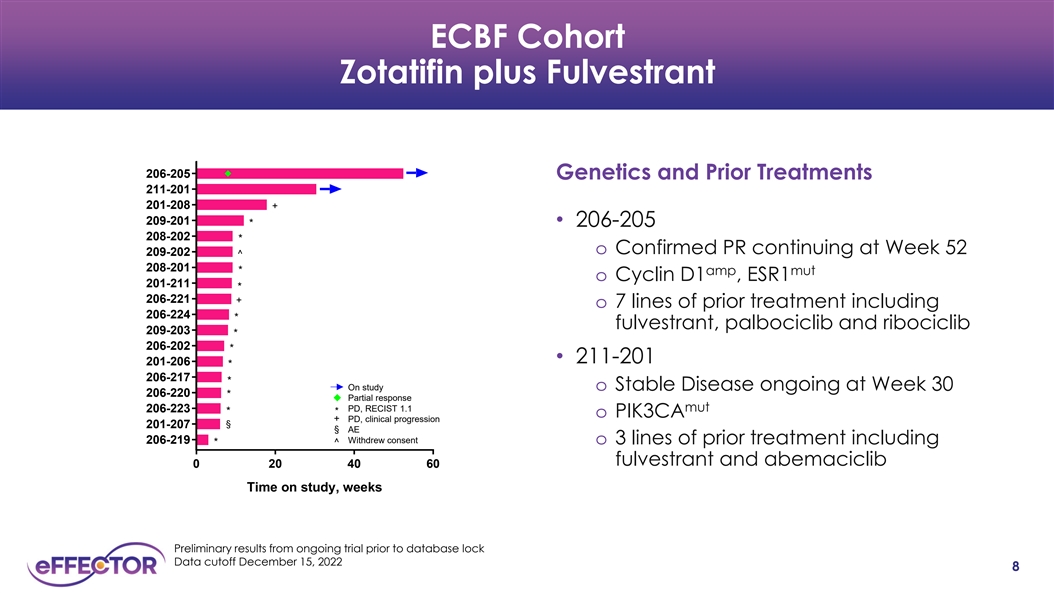
ECBF Cohort Zotatifin plus Fulvestrant 206-205 Genetics and Prior Treatments 211-201 201-208 + 209-201 * • 206-205 208-202 * o Confirmed PR continuing at Week 52 209-202 ^ 208-201 * amp mut o Cyclin D1 , ESR1 201-211 * 206-221 + o 7 lines of prior treatment including 206-224 * fulvestrant, palbociclib and ribociclib 209-203 * 206-202 * • 211-201 201-206 * 206-217 * On study o Stable Disease ongoing at Week 30 206-220 * Partial response 206-223 PD, RECIST 1.1 mut * * o PIK3CA + PD, clinical progression § 201-207 § AE Withdrew consent 206-219 o 3 lines of prior treatment including * ^ fulvestrant and abemaciclib 0 204060 Time on study, weeks Preliminary results from ongoing trial prior to database lock Data cutoff December 15, 2022 8
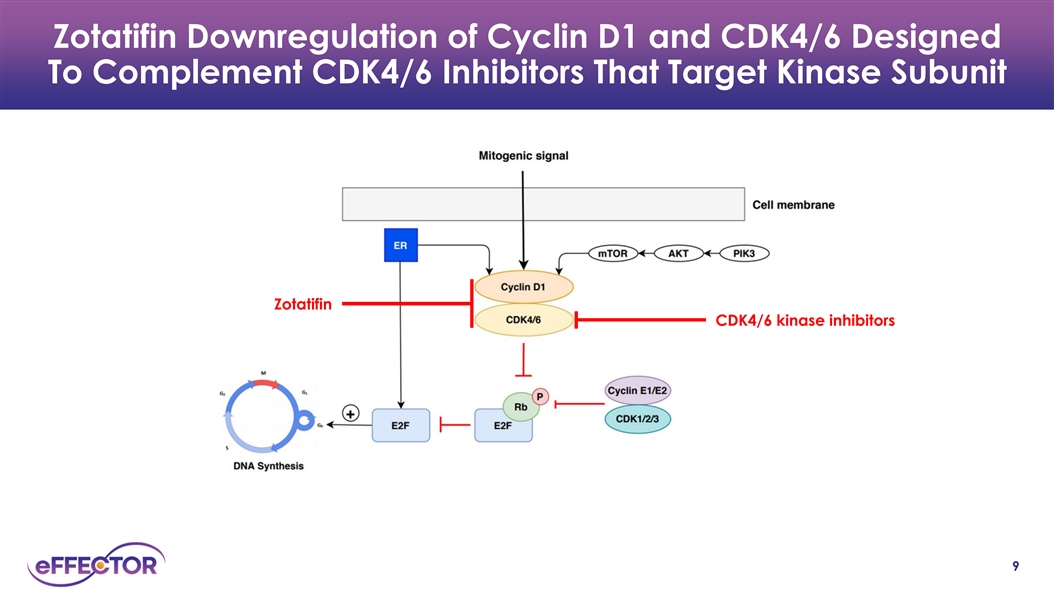
Zotatifin Downregulation of Cyclin D1 and CDK4/6 Designed To Complement CDK4/6 Inhibitors That Target Kinase Subunit Zotatifin CDK4/6 kinase inhibitors 9
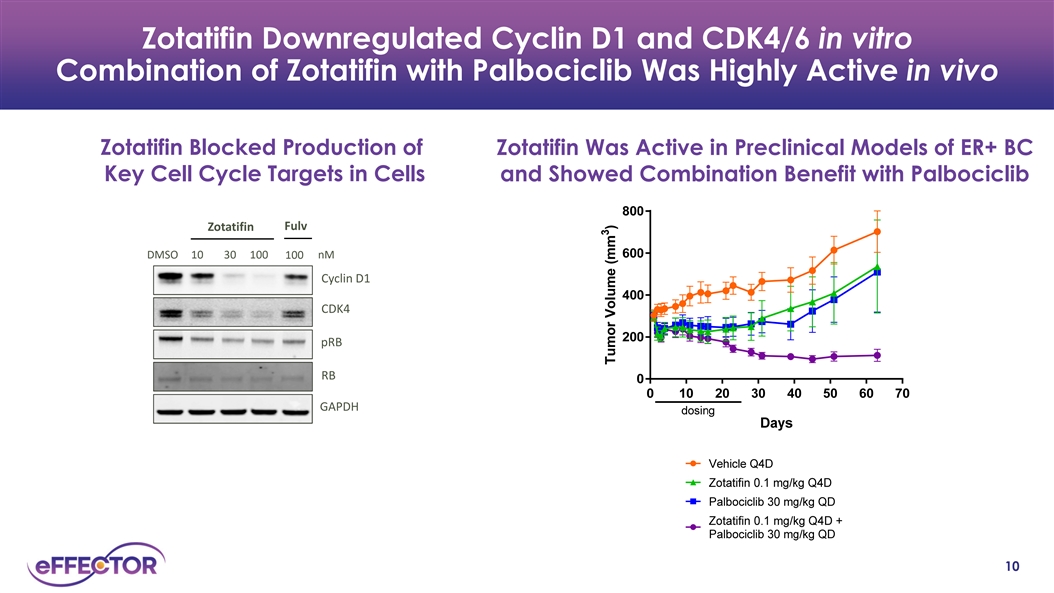
Zotatifin Downregulated Cyclin D1 and CDK4/6 in vitro Combination of Zotatifin with Palbociclib Was Highly Active in vivo Zotatifin Blocked Production of Zotatifin Was Active in Preclinical Models of ER+ BC Key Cell Cycle Targets in Cells and Showed Combination Benefit with Palbociclib Fulv Zotatifin DMSO 10 30 100 100 nM Cyclin D1 CDK4 pRB RB GAPDH 10 3 Tumor Volume (mm )
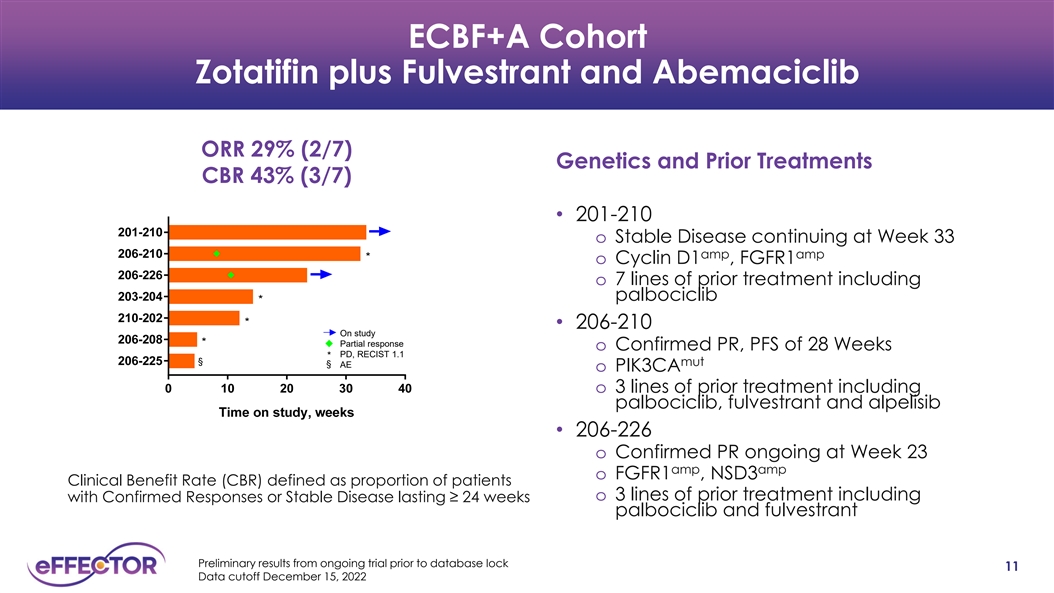
ECBF+A Cohort Zotatifin plus Fulvestrant and Abemaciclib ORR 29% (2/7) Genetics and Prior Treatments CBR 43% (3/7) • 201-210 o Stable Disease continuing at Week 33 amp amp o Cyclin D1 , FGFR1 o 7 lines of prior treatment including palbociclib • 206-210 On study Partial response o Confirmed PR, PFS of 28 Weeks PD, RECIST 1.1 * mut § AE o PIK3CA o 3 lines of prior treatment including palbociclib, fulvestrant and alpelisib • 206-226 o Confirmed PR ongoing at Week 23 amp amp o FGFR1 , NSD3 Clinical Benefit Rate (CBR) defined as proportion of patients o 3 lines of prior treatment including with Confirmed Responses or Stable Disease lasting ≥ 24 weeks palbociclib and fulvestrant Preliminary results from ongoing trial prior to database lock 11 Data cutoff December 15, 2022
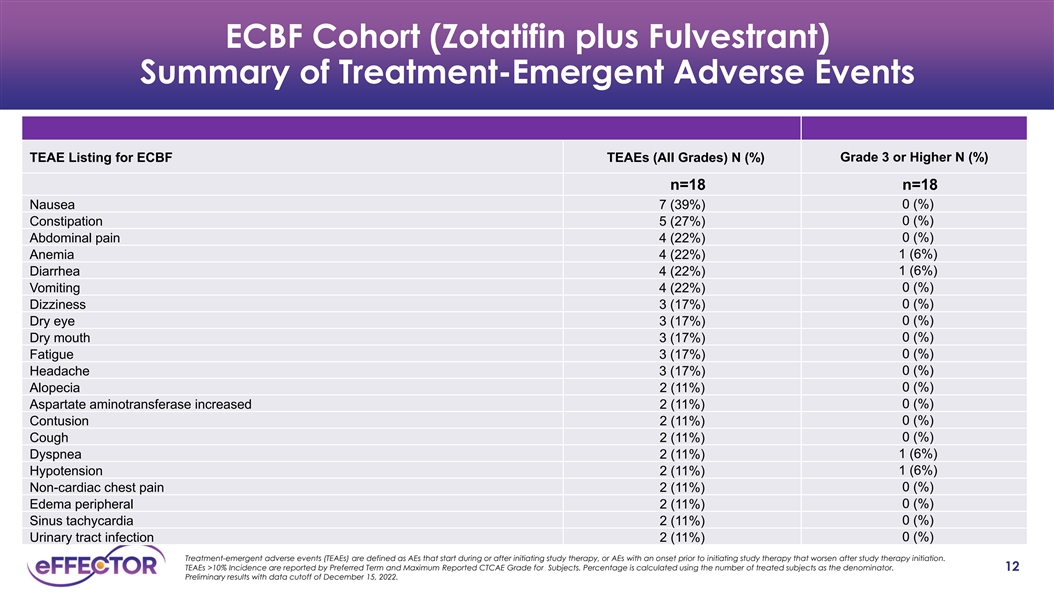
ECBF Cohort (Zotatifin plus Fulvestrant) Summary of Treatment-Emergent Adverse Events TEAE Listing for ECBF TEAEs (All Grades) N (%) Grade 3 or Higher N (%) n=18 n=18 0 (%) Nausea 7 (39%) Constipation 5 (27%) 0 (%) 0 (%) Abdominal pain 4 (22%) Anemia 4 (22%) 1 (6%) 1 (6%) Diarrhea 4 (22%) Vomiting 4 (22%) 0 (%) 0 (%) Dizziness 3 (17%) Dry eye 3 (17%) 0 (%) 0 (%) Dry mouth 3 (17%) Fatigue 3 (17%) 0 (%) 0 (%) Headache 3 (17%) Alopecia 2 (11%) 0 (%) 0 (%) Aspartate aminotransferase increased 2 (11%) Contusion 2 (11%) 0 (%) 0 (%) Cough 2 (11%) Dyspnea 2 (11%) 1 (6%) 1 (6%) Hypotension 2 (11%) Non-cardiac chest pain 2 (11%) 0 (%) 0 (%) Edema peripheral 2 (11%) Sinus tachycardia 2 (11%) 0 (%) 0 (%) Urinary tract infection 2 (11%) Treatment-emergent adverse events (TEAEs) are defined as AEs that start during or after initiating study therapy, or AEs with an onset prior to initiating study therapy that worsen after study therapy initiation. TEAEs >10% Incidence are reported by Preferred Term and Maximum Reported CTCAE Grade for Subjects. Percentage is calculated using the number of treated subjects as the denominator. 12 Preliminary results with data cutoff of December 15, 2022.
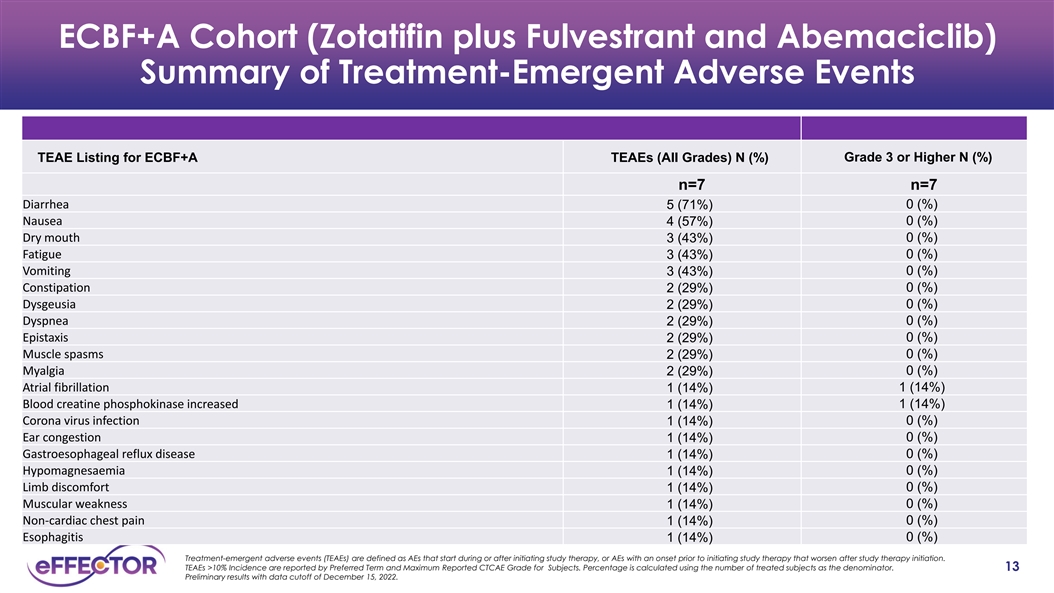
ECBF+A Cohort (Zotatifin plus Fulvestrant and Abemaciclib) Summary of Treatment-Emergent Adverse Events TEAE Listing for ECBF+A TEAEs (All Grades) N (%) Grade 3 or Higher N (%) n=7 n=7 Diarrhea 0 (%) 5 (71%) Nausea 4 (57%) 0 (%) Dry mouth 0 (%) 3 (43%) Fatigue 3 (43%) 0 (%) Vomiting 0 (%) 3 (43%) Constipation 2 (29%) 0 (%) Dysgeusia 0 (%) 2 (29%) Dyspnea 2 (29%) 0 (%) Epistaxis 0 (%) 2 (29%) Muscle spasms 2 (29%) 0 (%) Myalgia 0 (%) 2 (29%) Atrial fibrillation 1 (14%) 1 (14%) Blood creatine phosphokinase increased 1 (14%) 1 (14%) Corona virus infection 1 (14%) 0 (%) Ear congestion 0 (%) 1 (14%) Gastroesophageal reflux disease 1 (14%) 0 (%) Hypomagnesaemia 0 (%) 1 (14%) Limb discomfort 1 (14%) 0 (%) Muscular weakness 0 (%) 1 (14%) Non-cardiac chest pain 1 (14%) 0 (%) Esophagitis 0 (%) 1 (14%) Treatment-emergent adverse events (TEAEs) are defined as AEs that start during or after initiating study therapy, or AEs with an onset prior to initiating study therapy that worsen after study therapy initiation. TEAEs >10% Incidence are reported by Preferred Term and Maximum Reported CTCAE Grade for Subjects. Percentage is calculated using the number of treated subjects as the denominator. 13 Preliminary results with data cutoff of December 15, 2022.
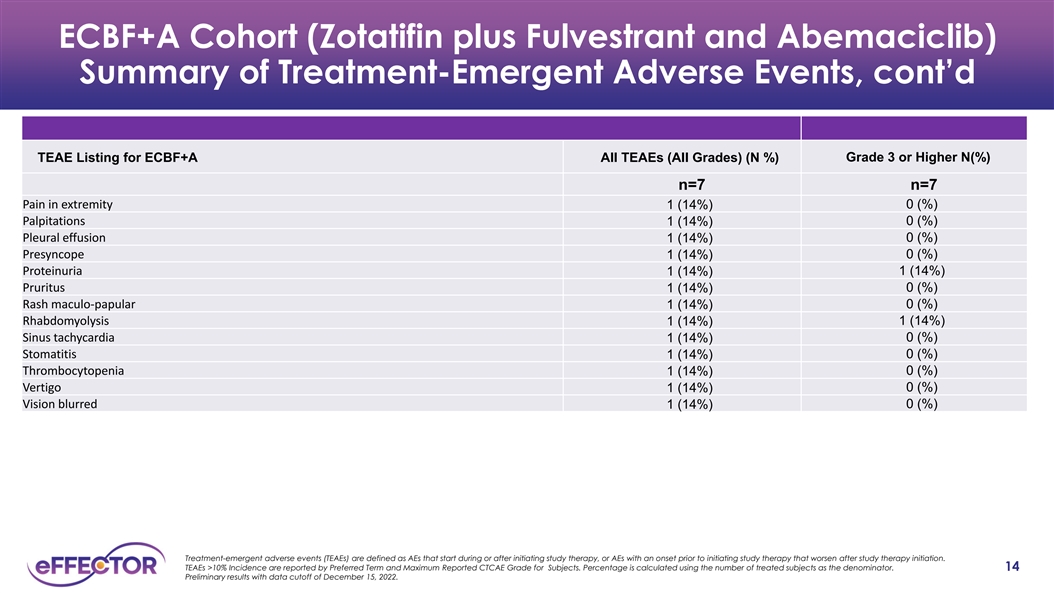
ECBF+A Cohort (Zotatifin plus Fulvestrant and Abemaciclib) Summary of Treatment-Emergent Adverse Events, cont’d TEAE Listing for ECBF+A All TEAEs (All Grades) (N %) Grade 3 or Higher N(%) n=7 n=7 Pain in extremity 0 (%) 1 (14%) Palpitations 1 (14%) 0 (%) Pleural effusion 0 (%) 1 (14%) Presyncope 1 (14%) 0 (%) Proteinuria 1 (14%) 1 (14%) Pruritus 1 (14%) 0 (%) Rash maculo-papular 0 (%) 1 (14%) Rhabdomyolysis 1 (14%) 1 (14%) Sinus tachycardia 0 (%) 1 (14%) Stomatitis 1 (14%) 0 (%) Thrombocytopenia 0 (%) 1 (14%) Vertigo 1 (14%) 0 (%) Vision blurred 0 (%) 1 (14%) Treatment-emergent adverse events (TEAEs) are defined as AEs that start during or after initiating study therapy, or AEs with an onset prior to initiating study therapy that worsen after study therapy initiation. TEAEs >10% Incidence are reported by Preferred Term and Maximum Reported CTCAE Grade for Subjects. Percentage is calculated using the number of treated subjects as the denominator. 14 Preliminary results with data cutoff of December 15, 2022.
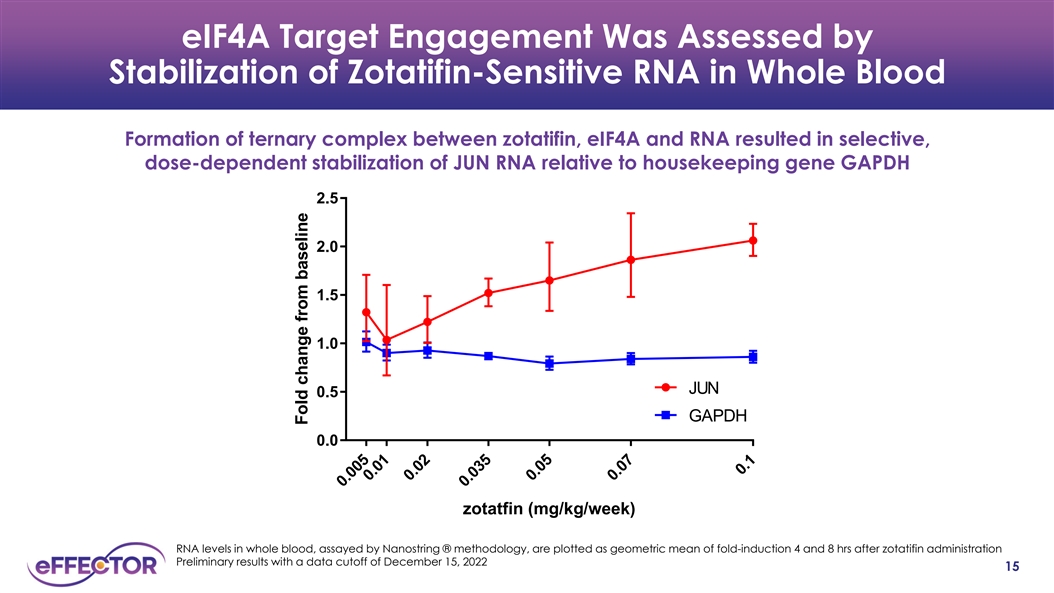
eIF4A Target Engagement Was Assessed by Stabilization of Zotatifin-Sensitive RNA in Whole Blood Formation of ternary complex between zotatifin, eIF4A and RNA resulted in selective, dose-dependent stabilization of JUN RNA relative to housekeeping gene GAPDH 2.5 2.0 1.5 1.0 JUN 0.5 GAPDH 0.0 zotatfin (mg/kg/week) RNA levels in whole blood, assayed by Nanostring ® methodology, are plotted as geometric mean of fold-induction 4 and 8 hrs after zotatifin administration Preliminary results with a data cutoff of December 15, 2022 15 0.005 0.01 0.02 0.035 05 0. 0.07 0.1 Fold change from baseline
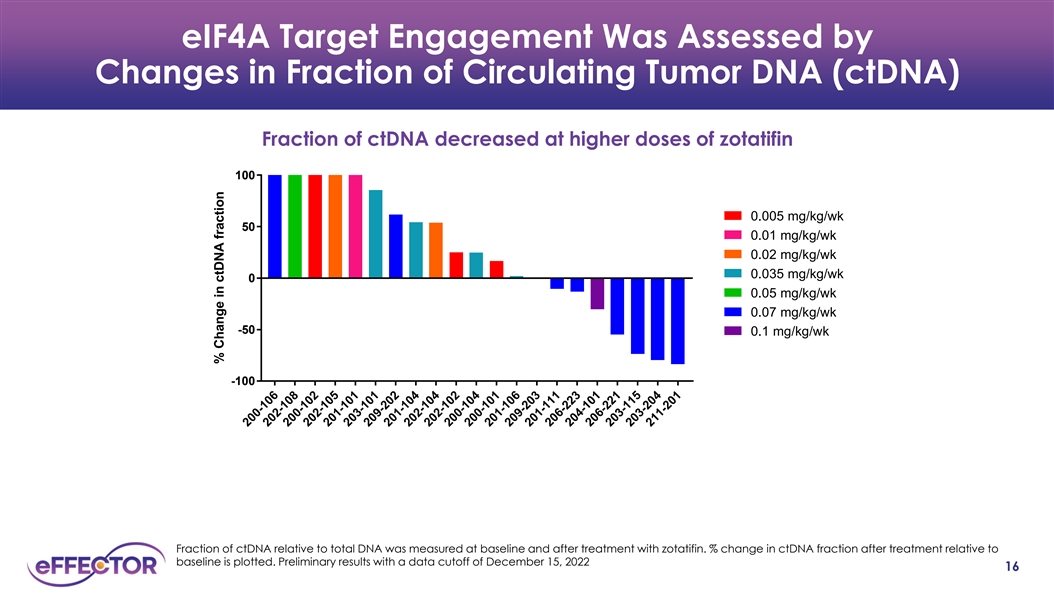
eIF4A Target Engagement Was Assessed by Changes in Fraction of Circulating Tumor DNA (ctDNA) Fraction of ctDNA decreased at higher doses of zotatifin 100 0.005 mg/kg/wk 50 0.01 mg/kg/wk 0.02 mg/kg/wk 0.035 mg/kg/wk 0 0.05 mg/kg/wk 0.07 mg/kg/wk -50 0.1 mg/kg/wk -100 Fraction of ctDNA relative to total DNA was measured at baseline and after treatment with zotatifin. % change in ctDNA fraction after treatment relative to baseline is plotted. Preliminary results with a data cutoff of December 15, 2022 16 2 0 1 6 0 - 0 202-108 200-102 202-105 201-101 203-101 209-202 201-104 202-104 202-102 200-104 200-101 201-106 209-203 201-111 206-223 204-101 206-221 203-115 203-204 211-201 % Change in ctDNA fraction
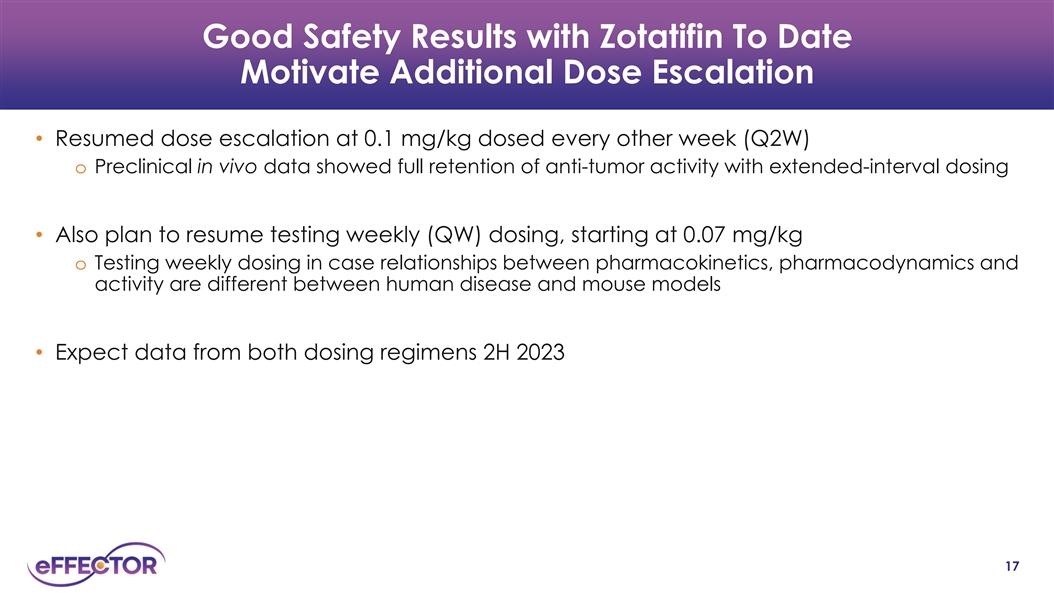
Good Safety Results with Zotatifin To Date Motivate Additional Dose Escalation • Resumed dose escalation at 0.1 mg/kg dosed every other week (Q2W) o Preclinical in vivo data showed full retention of anti-tumor activity with extended-interval dosing • Also plan to resume testing weekly (QW) dosing, starting at 0.07 mg/kg o Testing weekly dosing in case relationships between pharmacokinetics, pharmacodynamics and activity are different between human disease and mouse models • Expect data from both dosing regimens 2H 2023 17
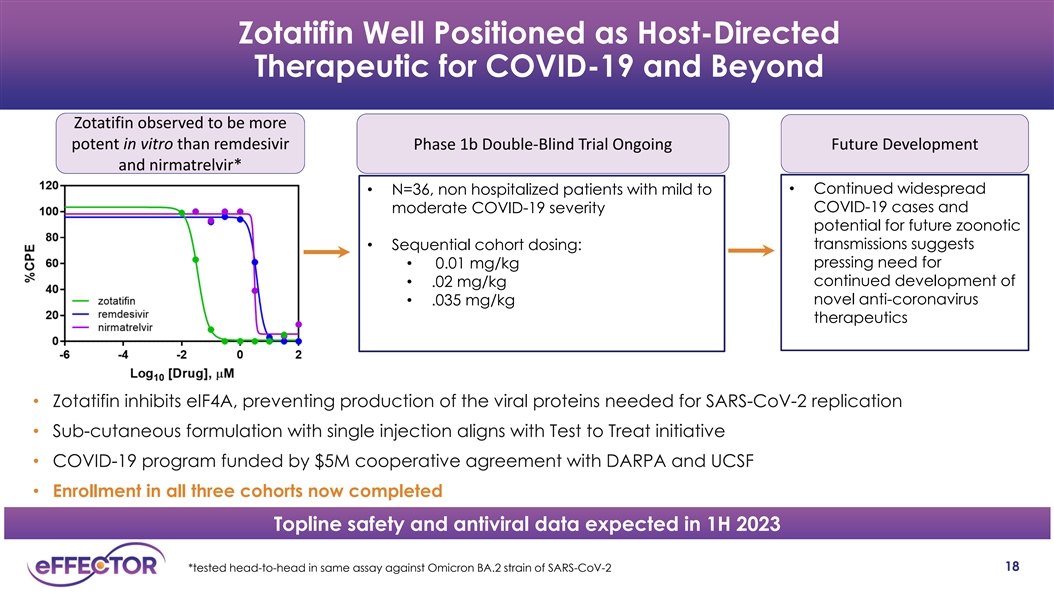
Zotatifin Well Positioned as Host-Directed Therapeutic for COVID-19 and Beyond Zotatifin observed to be more potent in vitro than remdesivir Phase 1b Double-Blind Trial Ongoing Future Development and nirmatrelvir* • Continued widespread • N=36, non hospitalized patients with mild to COVID-19 cases and moderate COVID-19 severity potential for future zoonotic • Sequential cohort dosing: transmissions suggests pressing need for • 0.01 mg/kg continued development of • .02 mg/kg novel anti-coronavirus • .035 mg/kg therapeutics • Zotatifin inhibits eIF4A, preventing production of the viral proteins needed for SARS-CoV-2 replication • Sub-cutaneous formulation with single injection aligns with Test to Treat initiative • COVID-19 program funded by $5M cooperative agreement with DARPA and UCSF • Enrollment in all three cohorts now completed Topline safety and antiviral data expected in 1H 2023 18 *tested head-to-head in same assay against Omicron BA.2 strain of SARS-CoV-2
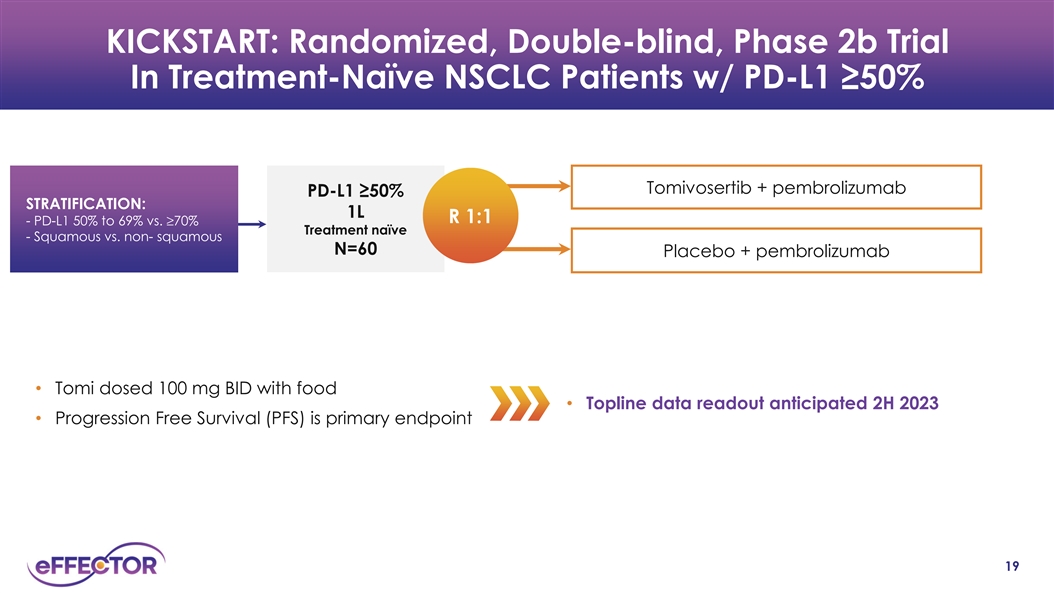
KICKSTART: Randomized, Double-blind, Phase 2b Trial In Treatment-Naïve NSCLC Patients w/ PD-L1 ≥50% Tomivosertib + pembrolizumab PD-L1 ≥50% STRATIFICATION: 1L R 1:1 - PD-L1 50% to 69% vs. ≥70% Treatment naïve - Squamous vs. non- squamous N=60 Placebo + pembrolizumab • Tomi dosed 100 mg BID with food • Topline data readout anticipated 2H 2023 • Progression Free Survival (PFS) is primary endpoint 19
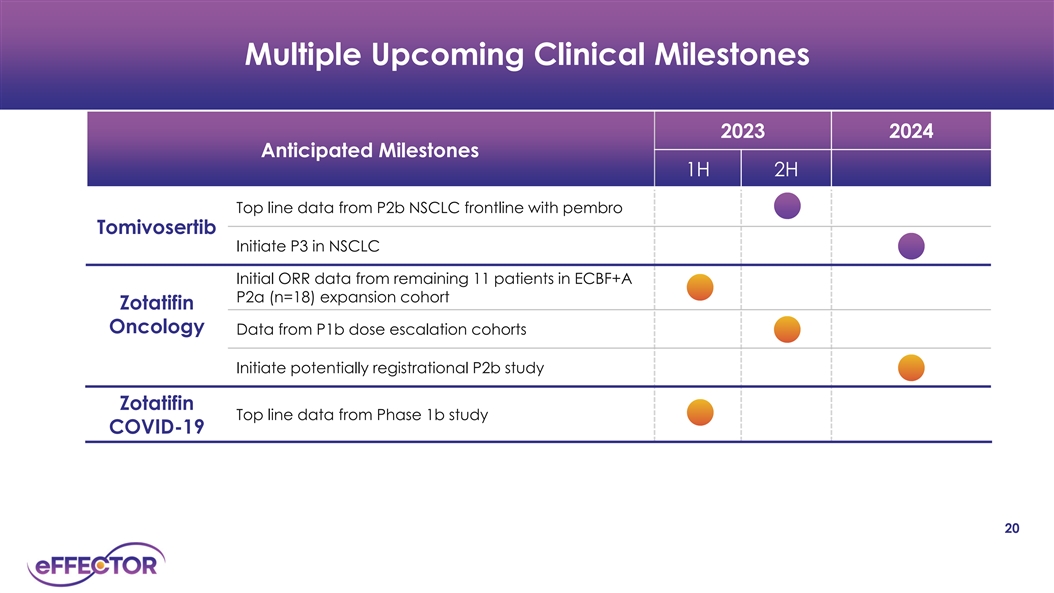
Multiple Upcoming Clinical Milestones 2023 2024 Anticipated Milestones 1H 2H Top line data from P2b NSCLC frontline with pembro Tomivosertib Initiate P3 in NSCLC Initial ORR data from remaining 11 patients in ECBF+A P2a (n=18) expansion cohort Zotatifin Oncology Data from P1b dose escalation cohorts Initiate potentially registrational P2b study Zotatifin Top line data from Phase 1b study COVID-19 20
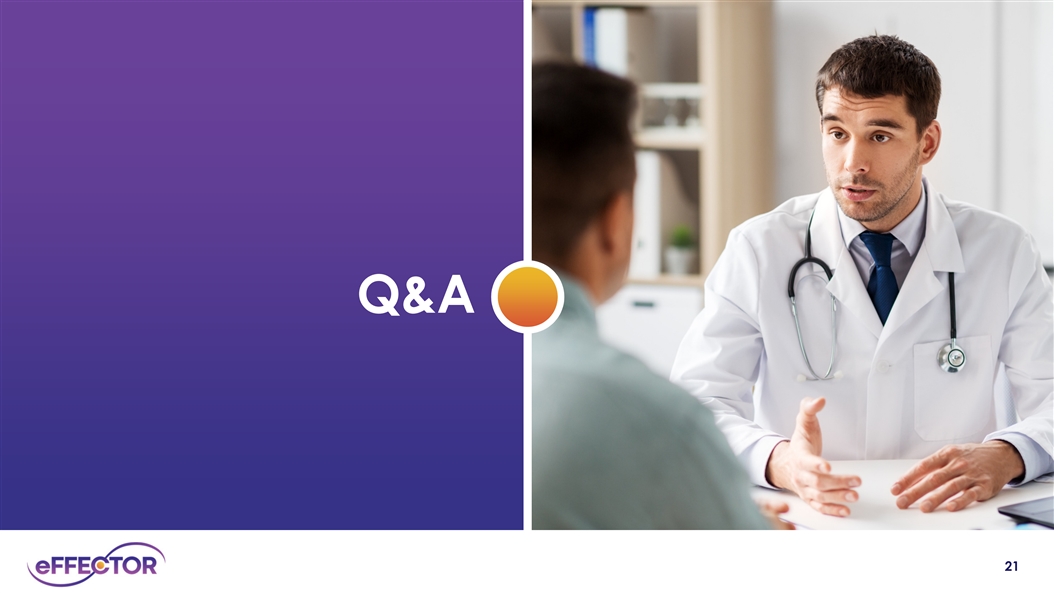
Q&A 21
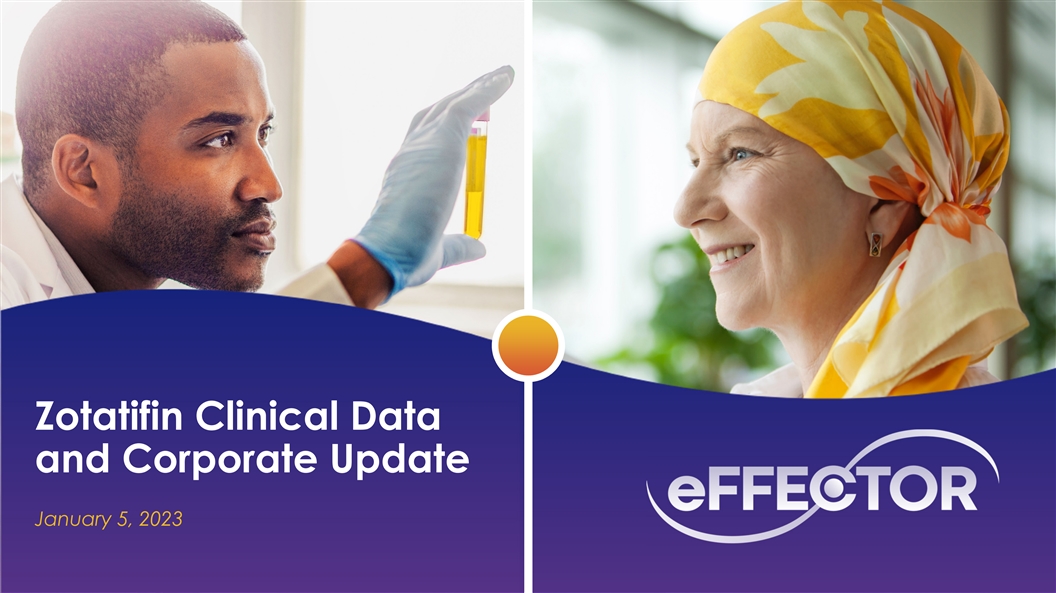
Zotatifin Clinical Data and Corporate Update January 5, 2023





















